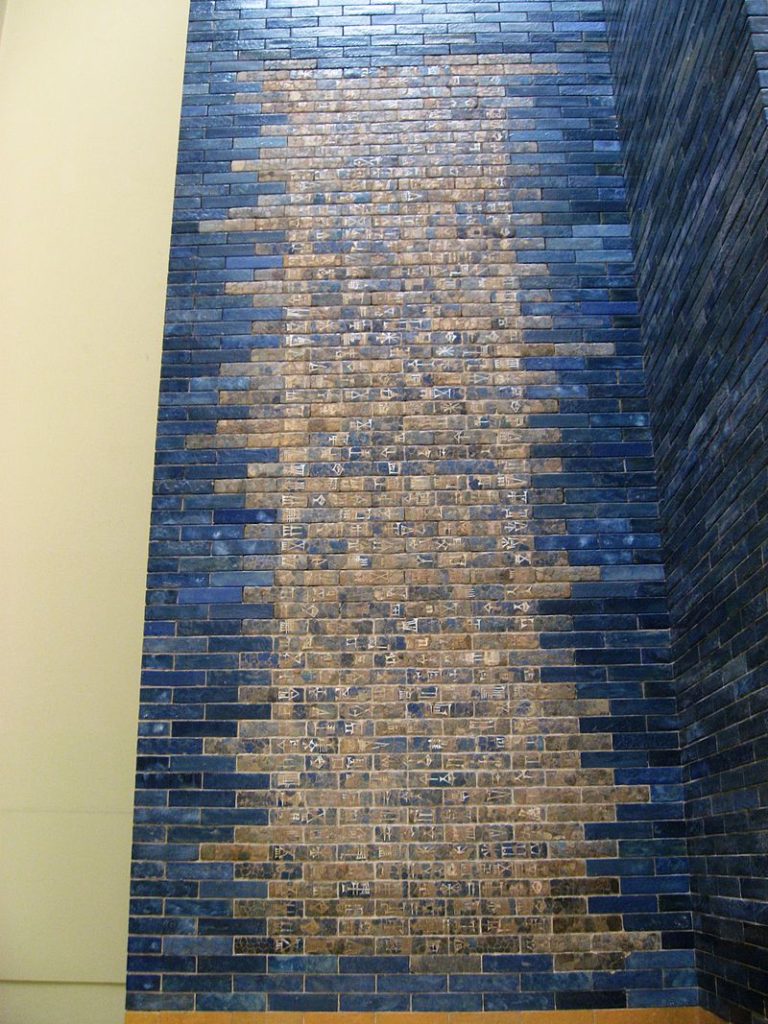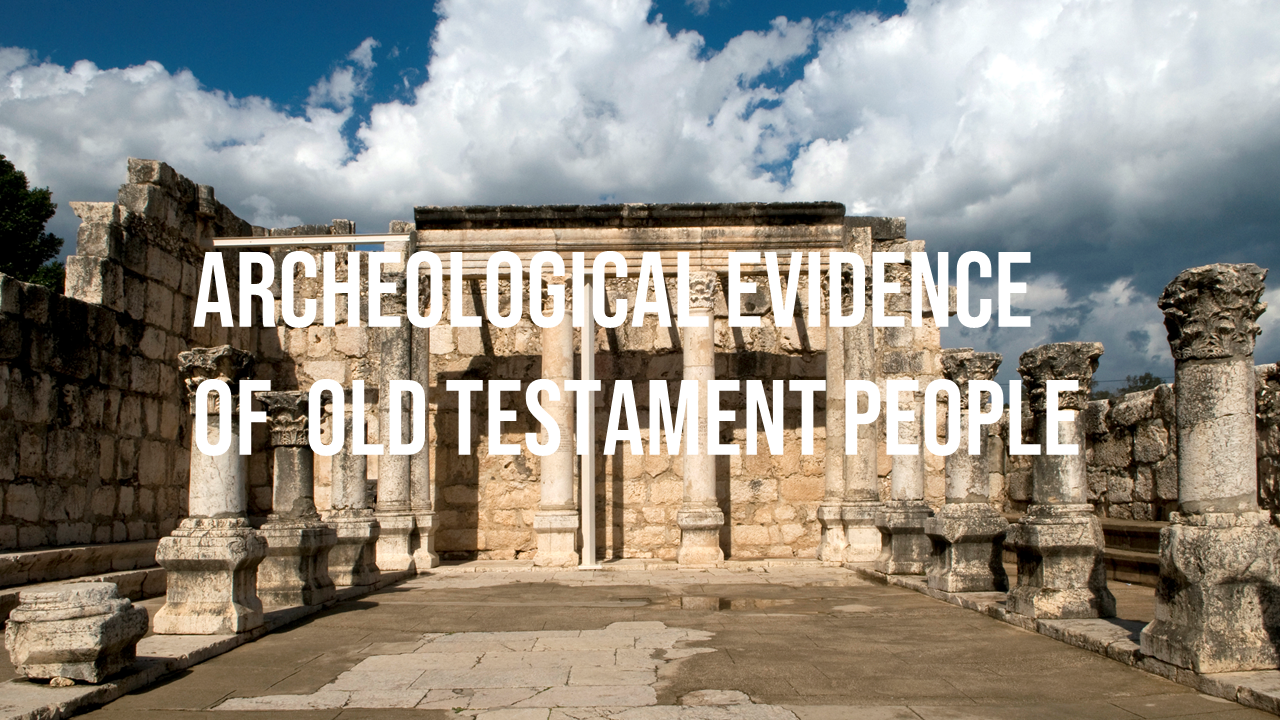
Real People…Real History !
Biblical Archaeological Review has found 53 figures from the Old Testament that have been confirmed archaeologically confirmed.
“Their names appear in inscriptions written during the period described by the Bible and in most instances during or quite close to the lifetime of the person identified
Lawrence Mykytiuk: University of Purdue (Biblical Archaeology Review June 2017
39 Of The 53 Historical Figures Identified In Non-Bible Sources
| Name | Title | Date (BC) | Non Bible Source and Notes | Bible Reference |
| Adrammelech | Prince of Persia | fl. 681 | Identified as the murderer of his father in the Bible and letter to Esarhaddon | Isaiah 37:38, 2 KIngs 19:37 |
| Ahab | King of Israel | c. 874-853 | Identified in the Kurkh Monolith inscription of Shalmaneser describes defeat of Ahab in Battle of Qarqar | 1 Kings 17, 2 Chronicles 18 |
| Ahaz | King of Judah | c. 732-c.716 | Mentioned in contemporary Summary Inscription of Tiglath-Pileser III which records that he received tribute from Jehoahas of Judah | 2 KIngs 16, Hosea 1:1, Micah 1:1, Isaiah 1:1 |
| Apries | Pharaoh of Egypt | 589-570 | Also known as Hophra; named in numerous contemporary inscriptions including those of the capitals of the columns of his palace | Jeremiah 44:30 |
| Artaxerxes 1 | King Of Persia | 465-424 | Widely identified with “Antaxerxes” in the book of Nehemiah. He is also found in the writings of contemporary historian Thucydides | Nehemiah 2:1, 5:14 |
| Ashurbanipal | King of Assyria | 668-627 | Generally identified with “the great and noble Osnappar” mentioned in the Book of Ezra. His name survives in his own writings | Ezra 4:10 |
| Belshazzar | Coregent of Babylon | c. 553-539 | Mentioned by his fatehr Nabonidus in the Nabonidus Cylinder. | Daniel 5, 7:1, 8:1 |
| Ben-hadad | King of Aram Damascus | early 8th century | Mentioned in Zakkur Stele. A son of Hazael | 2 Kings 13:3, 13:24 |
| Cyrus II | King of Persia | 559-530 | Appears in many ancient inscriptions, most notably the Cyrus Cylinder | Isaiah 45:1, Daniel 1:21 |
| Darius 1 | King of Persia | 522-486 | Mentioned in the books of Haggai, Zechariah, and Ezra. He is author of Behistun Inscription | Haggai 1:1, Ezra 5:6 |
| Ersarhaddon | King of Assyria | 681-669 | His name survives in his own writings, as well as those of his son Ashurbanipal | Isaiah 37:38, Ezra 4:2 |
| Evil Merodach | King of Babylon | c. 562-560 | His name (Akkadian (Amel-Marduk) and title were found on a vase from his palace, and on several cuneiform tablets | 2 KIngs 25:27, Jeremiah 52:31 |
| Hazael | King of Aram Damascus | c. 842-800 | Shalmaneser III of Assyria records that he defeated Hazael in battle and captured many chariots and horses from him. Most scholars think that Hazael was the author of the Tel Dan Stele | 1 Kings 19:15, 8:8, Amos 1:4 |
| Hezekiah | King of Judah | c. 715-c. 686 | An account is preserved by Sennacherib of how he besieged “Hezekiah, the Jew”, who “did not submit to my yoke”, in his capital city of Jerusalem. A bulla was also found bearing Hezekiah’s name and title, reading “Belonging to Hezekiah son of Ahaz king of Judah | |
| Hoshea | King of Israel | C 732-723 | He was put into power by Tilgath-Pileser III, king of Assyria, as recorded in his Annals, found in Calah | 2 Kings 15:30, 18:1 |
| Jehoash | King of Israel | c. 798-782 | Mentioned in the records of Adad-nirari III of Assyria as :Jehoash of Samaria | 2 Kings 13:10, 2 Chronicles 25:17 |
| Jehoiachin | King of Judah | 598-597 | He was taken captive to Babylon after Nebuchadnezzar first captured Jerusalem. Texts from Nebuchadnezzar’s Southern Palace record the rations given to “Jehoiachin king of the Judeans’ | 2 Kings 25:14, Jeremiah 52:31 |
| Jehu | King of Israel | c. 841-814 | Mentioned on the Black Obelisk | 1 Kings 19:16, Hosea 1:4 |
| Johanan | High Priest of Israel | c. 410-371 | Mentioned in a letter from the Elephantine Papyri | Nehemiah 12:22-23 |
| Jotham | King of Judah | c. 740-732 | Identified as the father of King Ahaz on a contemporary clay bulla, reading “of Ahaz son of Jotham king of Judah” | 2 Kings 15:5, Hosea 1:1, Micah 1:1, Isaiah 1:1 |
| Manasseh | King of Judah | c. 687-643 | Mentioned in the writings of Esarhaddon, who lists him as one of the kings who had brought him gifts and aided his conquest of Egypt | 2 Kings 20:21, Jeremiah 15:4 |
| Menahem | King of Israel | c 752-742 | The annals of Tiglath-Pileser record that Menahem paid tribute to him, as stated in the Books of Kings | 2 Kings 15:14-23 |
| Mesha | King of Moab | fl.c 840 | Author of the Mesha Stele | 2 KIngs 3:4 |
| Merodach-Baladan | King of Babylon | c. 605-562 | Named in the Great Inscription of Sargon II in his palace at Khorsabat. Also called “Berodach-Baladan” | Isaiah 39:1, 2 Kings 20:12 |
| Nebuchadnezzar II | King of Babylon | c. 605-562 | Mentioned in numerous contemporary sources, including the inscription of the Ishtar Gate, which he built. | Ezra 26:7, Daniel 1:1-2, Kings 24:1 |
| Nebuzaradan | Babylonian Official | fl. c. 587 | Mentioned in a prism in Istanbul (no. 7834), found in Babylon where he is listed as the “chief cook” | Jeremiah 52:12, 2 Kings 25:8 |
| Nebo-Sarsekim | chief Eunuch of Babylon | fl. c. 587 | Listed as Nabu-sharrussu-ukin in a Babylonian tablet | Jeremiah 39:3 |
| Necho II | Pharaoh of Egypt | c. 610-c. 595 | Mentioned in the writings of Ashurbanipal | 2 Kings 23:29, Jeremiah 46:2 |
| Omri | King of Israel | c. 880- c. 874 | Mentioned, together with his unnamed son or successor, on the Mesha Stele | 1 Kings 16:16, Micah 6:16 |
| Pekah | King of Israel | c. 740- c. 732 | Mentioned in the annals of Tiglath-Pileser III | 2 Kings 15:25, Isaiah 7:1 |
| Rezin | King of Aram Damascus | died c. 732 | A tributary of Tiglath-Pileser III of Assyria and the last king of Aram Damascus. According to the Bible, he was eventually put to death by Tiglath-Pileser | 2 Kings 16:7-9, Isaiah 7:1 |
| Sanballat | Governor of Samaria | fl. 445 | A leading figure of the opposition which Nehemiah encountered during the rebuilding of the walls around the temple in Jerusalem. Sanballat is mentioned in the Elephantine Papyrii | Nehemiah 2:10, 13:28 |
| Sargon II | King of Assyria | 722-705 | He besieged and conquered the city of Samaria and took many thousands captive, as recorded in the Bible and in an inscription in his royal palace. | Isaiah 20:1 |
| Sennacherib | King of Assyria | 705-681 | The author of a number of inscriptions discovered near Nineveh | 2 Kings 18:13, Isaiah 36:1 |
| Shalmaneser V | King of Assyria | 727-722 | Mentioned on several royal palace weights found at Nimrud. | 2 Kings 17:3, 18:9 |
| Taharqa | Pharoah of Egypt, King of Kush | 690-664 | Called “Tirhaka, the king of Kush” in the books of Kings and Isaiah. Several contemporary sources mention him and fragments of three statues bearing his name were excavated at Nineveh | Isaiah 37:9, 2 Kings 19:9 |
Tattenai | Governor of eber-Nari | fl. 520 | Known from contemporary Babylonian documents. he governed the Persian province west of the Euphrates river during the reign of Darius 1 | Ezra 5:3, 6:13 |
| Tiglath-Pileser III | King of Assyria | 745-727 | Numerous writings are ascribed to him and he is mentioned, among others, in an inscription by Barrakab, king of Sam’al. he exiled inhabitants of the cities he captured in Israel. | 2 Kings 15:29, 1 Chronicles 5:6 |
| Xerxes I | King of Persia | 486-465 | Called Ahasuerus in the books of Ezra and Esther. Xerxes is known in archaeology through a number of tablets and monuments, notably the “Gate of All Nations” in Persepolis | Esther 1:1, Daniel 9:1, Ezra 4:6 |
People And Place That Existed: The Nation of Israel In Antiquity And Jacob The Patriarch
The name Israel first appears in the Bible in Genesis 32:29. It refers to the renaming of Jacob, who was in turn the father of the twelve sons that the twelve tribes of Israel were named after.
Then he said, “Let me go, for the dawn is breaking.” But he said, “I will not let you go unless you bless me.” So he said to him, “What is your name?” And he said, “Jacob.” And he said, “Your name shall no longer be Jacob, but Israel; for you have striven with God and with men and have prevailed.”
Genesis 32:27-28
Israel geographically represents the fertile crescent on the southeastern shore of the Mediterranean Sea and the northern shore of the Red Sea referred to as the promised land referred to in Joshua 1:13.
“Remember the word which Moses the servant of the LORD commanded you, saying, ‘The LORD your God gives you rest, and will give you this land.’ “Your wives, your little ones, and your cattle shall remain in the land which Moses gave you beyond the Jordan, but you shall cross before your brothers in battle array, all your valiant warriors, and shall help them, until the LORD gives your brothers rest, as He gives you, and they also possess the land which the LORD your God is giving them.
Joshua 1:13-15
Archaeological Evidence : The Merneptah Stele
The Merneptah Stele-also known as the Israel Stele is an inscription by the ancient Egyptian Pharaoh Merneptah (reign: 1213-1203 BC) discovered by Flinders Petrie in 1896 at Thebes, and now housed in the Egyptian Museum in Cairo. Wikipedia
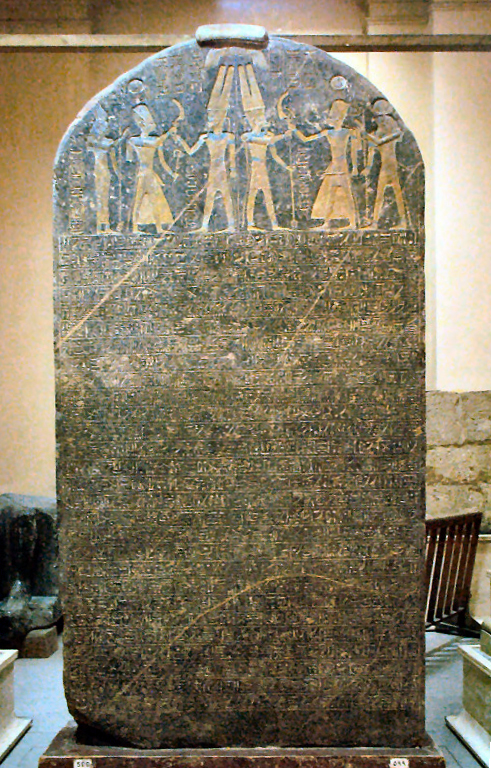
Person And Place That Existed : The City Of Beth-Shan
Israel’s King Saul (Ca 1037-1010 BC)
Saul is a renowned King of Israel in the Old Testament. He was Israel’s first monarch. Saul was also the king that David, the author of Psalms, took the place of.
The biblical city of Beth Shan has been excavated since the 1920s and 1930s and has revealed an occupation beginning from approximately 4500 BC and extending to the eleventh century AD. It is the location where the bodies of King Saul and his sons were fastened on the city walls (1 Samuel 31:8-13) after their deaths in battle with the Philistines. The temple unearthed at the site also may be the Temple of Dagon, where Saul and Jonathan’s armor and heads were exhibited (1 Chronicles 10:10).
Joseph M. Holden;Norman Geisler. The Popular Handbook of Archaeology and the Bible: Discoveries That Confirm the Reliability of Scripture (Kindle Location 820). Kindle Edition.
Saul was forty years old when he began to reign, and he reigned thirty-two years over Israel.
1 Samuel 13:1
And it came about on the next day when the Philistines came to strip the slain, that they found Saul and his three sons fallen on Mount Gilboa. And they cut off his head, and stripped off his weapons, and sent them throughout the land of the Philistines, to carry the good news to the house of their idols and to the people. And they put his weapons in the temple of Ashtaroth, and they fastened his body to the wall of Beth-Shan. Now when the inhabitants of Jabesh-gilead heard what the Philistines had done to Saul, all the valiant men rose and walked all night, and took the body of Saul and the bodies of his sons from the wall of Beth-Shan and they came to Jabesh, and burned them there. And they took their bones and buried them under the tamarisk tree at Jabesh, and fasted seven days.
1 Samuel 31:8-13
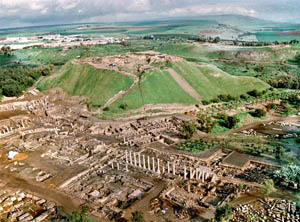
Person That Existed : King Ahab Of Israel (871-852 BC)
King Ahab was the seventh king of Israel since Jeroboam (874-853 BC), the son and successor of King Omri and the husband of Jezebel. The Hebrew Bible presents Ahab as a wicked king, particularly for condoning Jezebel’s influence on religious policies.
So Omri slept with his fathers, and was buried in Samaria; and Ahab his son became king in his place. Now Ahab the son of Omri became king over Israel in the thirty-eighth year of Asa king of Judah, and Ahab the son of Omri reigned over Israel in Samaria twenty-two years.
1 KIngs 16:28-29
How We Know : The Kurkh Monolith
The existence of Ahab is historically supported outside the Bible. Shalmaneser of Assyria documented in 853 BC that he defeated an alliance of a dozen kings in the Battle of Qarqar, one of these was Ahab. He is also mentioned on the inscriptions of the Mesha Stele.[2]
The stele inscription was discovered in the Turkish village of Kurkh. It was erected by the Assyrian king Shalmaneser III to commemorate his victory at the battle of Qarar. The stele records the ninth-century BC battle in which Israel’s king Ahab is mentioned to have contributed “2,000 chariots, 10,000 foot soldiers” to a military alliance.
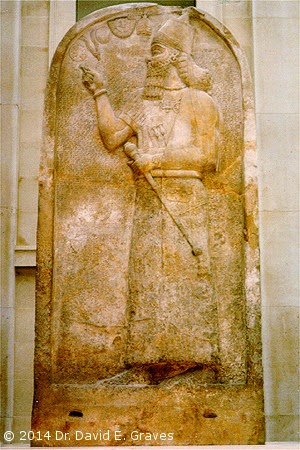
People That Existed : King Omri Of Israel (884 – 873 BC)
King David Of Israel (1010-970 BC)
King Omri was the sixth king of the northern kingdom of Israel. Despite his precarious ascension to the throne, Omri ruled for twelve years (885–874 BC) before his son, King Ahab, succeeded him.
In the thirty-first year of Asa king of Judah, Omri began to reign over Israel, and he reigned for twelve years
1 Kings 16:23 (Mentioned 18 times in Old Testament)
The biblical King David of Israel was known for his diverse skills as both a warrior and a writer of Psalms. In his 40 years as ruler, between approximately 1010 and 970 BC, he united the people of Israel, led them to victory in battle, conquered land and paved the way for his son, Solomon to build the Holy Temple Almost all knowledge of him is derived from the books of the Prophets, 1 Samuel and 2 Samuel, 1 Kings, and 1 Chronicles
And the men of Judah came, and there they anointed David king over the house of Judah
2 Samuel 2:4 (Mentioned 1080 times in both Old and New Testament
How We Know : The Mesha Stele or Moabite Stone
The Mesha Stele, also known as the Moabite Stone, is a stele (inscribed stone) set up around 840 BCE by King Mesha of Moab (a kingdom located in modern Jordan).
The Mesha Stele, the longest Iron Age inscription ever found in the region, constitutes the major evidence for the Moabite language and is a “corner-stone of Semitic epigraphy”, and history. The stele, whose story parallels, with some differences, an episode in the Bible’s Books of Kings (2 Kings 3:4–8), provides invaluable information on the Moabite language and the political relationship between Moab and Israel at one moment in the 9th century BCE. It is the most extensive inscription ever recovered that refers to the kingdom of Israel (the “House of Omri“); it bears the earliest certain extrabiblical reference to the Israelite god Yaweh. Andre Lamaire reconstructed a portion of line 31 to read “House of David” which would mean it might contain the earliest extra-Biblical witness to David. Lemaire’s . The stele is regarded as genuine and historical by the vast majority of biblical archaeologists today.
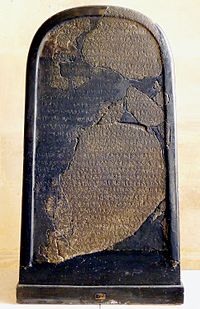
Person That Existed : Balaam Old Testament Diviner
Balaam was a wicked prophet in the Bible and is noteworthy because, although he was a wicked prophet, he was not a false prophet. That is, Balaam did hear from God, and God did give him some true prophecies to speak. However, Balaam’s heart was not right with God, and eventually he showed his true colors by betraying Israel and leading them astray.
In Numbers 22—24, we find the story about Balaam and the king of Moab, a man called Balak.
Then God came to Balaam and said, “Who are these men with you?” And Balaam said to God, “Balak the son of Zippor, king of Moab, has sent word to me, “Behold, there is a people who came out of Egypt and they cover the surface of the land; now come, curse them for me; perhaps I may be able to fight agaisnt them, and drive them out.” And God said to Balaam, “Do not go with them; you shall not curse the people; for they are blessed.”
Numbers 22:9-12
How We Know : The Deir Alla Inscription
Also known as Bal’am Son of Be’or Inscription, was discovered during a 1967 excavation in Deir ‘Alla, Jordan. The excavation revealed a multiple-chamber structure that had been destroyed by an earthquake during the Persian period, on the wall of which was written a story relating visions of Bal’am, son of Be’or, a “seer of the gods”, who may be the same Balaam mentioned in Numbers 22–24
The Inscription begins:
The sayings of Balaam, son of Jeor, the man who was a seer of the gods
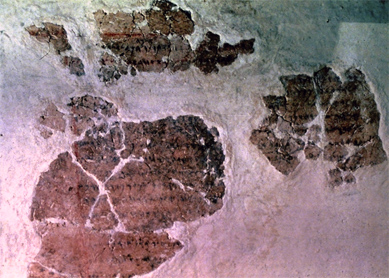
People That Existed : King Jehoram Of Judah (849-842 BC)
Jezebel Wife Of King Ahab (Died 842 BC)
Jehoram or Joram was the fifth king of Judah, and the son of king Johoshaphat. Jehoram (2 Kings 8:17, 2 Chronicles 21:20) He took the throne at the age of 32 and reigned for 8 years.
Jezebel was the wife of Ahab, King of Israel according to the 1 Kings 16:31. Jezebel, along with her husband instituted the worship of Baal and Asherah She violently purged the prophets of Yahweh from Israel.
Now in the fifth year of Joram the son of Ahab king of Israel, Jehoshaphat being then the king of Judah, Jehoram the son of Jehoshaphat king of Judah became king. 17 He was thirty-two years old when he became king, and he reigned eight years in Jerusalem.
2 Kings 8:16-17 (Joram mentioned 30 times in Old Testament)
And it came about, as though it had been a trivial thing for him to walk in the sins of Jeroboam the son of Nebat, that he married Jezebel the daughter of Ethbaal king of the Sidonians, and went to serve Baal and worshiped him.
1 Kings 16:31 (Mentioned 22 times in Old Testament)
How We Know : Tel Dan stele
The Tel Dan Stele is a fragmentary stele discoverd in 1993 in Tel-Dan by Gila Cook. The surviving inscription, which dates to 9th century BC details that an individual killed Jehoram, the son of Ahab, king of Israel and the king of the house of David. These writings corroborate passages from the Bible in 2 Kings.
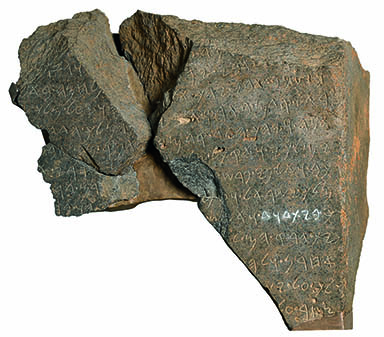
People That Existed : King Shalmaneser III (859-824 BC)
Jehu King of Israel (841-814 BC)
King Shalmaneser III was king of Assyria (859-824 BC, and son of the previous ruler AShurnasirpal II
Jehu was the tenth king of the norther Kingdom of Israel (841-814)
Now the word of the LORD came to Jehu the son of Hanani against Baasha, saying, “Inasmuch as I exalted you from the dust and made you leader over My people Israel, and you have walked in the way of Jeroboam and have made My people Israel sin, provoking Me to anger with their sins,
1 Kings 16:1-2
Shalmaneser king of Assyria came up against him, and Hoshea became his servant and paid him tribute.
2 Kings 17:2
How We Know : Black Obelisk of Shalmaneser III
Discovered by A.H.Layard in the palace of Nimrud, this ninth-century BC obelisk illustrates the military victories ofAssyrian king Shalmaneser III (858-824 BC). Worthy of note is that one panel depicts Jehu (or Joram) bowing before Shalmaneser III. The inscription reads, “Tribute of Yaua (Jehu) house of Omri, I received silver, gold, a golden bowl, a golden vase with pointed bottom, golden tumblers, golden buckets, tin, a staff for a king, spears.”
Joseph M. Holden;Norman Geisler. The Popular Handbook of Archaeology and the Bible: Discoveries That Confirm the Reliability of Scripture (Kindle Locations 834-835). Kindle Edition.
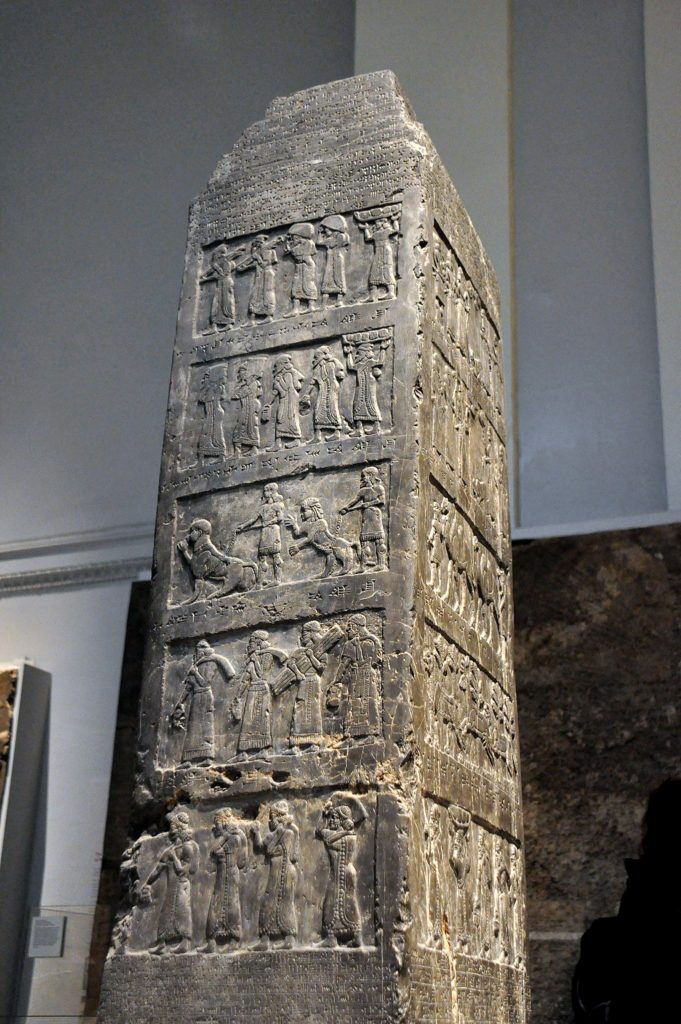
People That Existed : Tiglath-Pileser III King Of Assyria (745-727 BC)
Hoshea King Of Israel 732-721 BC
King Ahaz Of Israel
Tiglath -Pileser III was a prominent king of Assyria in the eight century BC who introduced advanced civil , military and political systems into the Neo-Assyrian Empire.
Biblical records describe how Tiglath-Pileser III exacted 1,000 talents of silver as tribute from King Menehem of the Kingdom of Israel (2 Kings 15:19) and later defeated his successor Pekah (2 Kings 15:29).
Pekah had allied with Rezin, king of the Arameans against Ahaz (known to the Assyrians as Yahu-khazi), of the Kingdom of Judah who responded by appealing for the Assyrian monarch’s help with the temple’s gold and silver. Tiglath-Pileser answered swiftly. He first marched his army down the eastern Mediterranean coast, taking coastal cities all the way to Egypt. This cut off his enemies’ access to the sea. Once this was achieved, he returned to the Northern Kingdom of Israel, destroyed their army, and deported the Reubenites, Gadites, and the people of Manasseh to Halah, Habor, Hara, and the Gozan river (1 Chron 5:26). He then installed an Israelite puppet king, Hoshea (732–723 BCE) in the place of Pekah. He concluded this extensive campaign by marching north and west, ravaging Aramaea, seizing Damascus, executing Rezin, and deporting the survivors to Kir (2 Kings 16:9). Beyond this, the Assyrian alliance was not beneficial to Ahaz (2 Chron 28:20). Wikepedia
In the days of Pekah king of Israel, Tiglath-pileser king of Assyria came and captured Ijon and Abel-beth-maacah and Janoah and Kedesh and Hazor and Gilead and Galilee, all the land of Naphtali; and he carried them captive to Assyria.
2 Kings 15:6 (Mentioned 3 times in Old Testament)
In the twelfth year of Ahaz king of Judah, Hoshea the son of Elah became king over Israel in Samaria, and reigned nine years
2 Kings 17:1
So Ahaz sent messengers to Tiglath-Pileser king of Assyria, saying, “I am your servant and your son; come up and deliver me from the hand of the King of Aram
2 Kings 15:7
How We Know : Tiglath-Pileser III Palace Relief
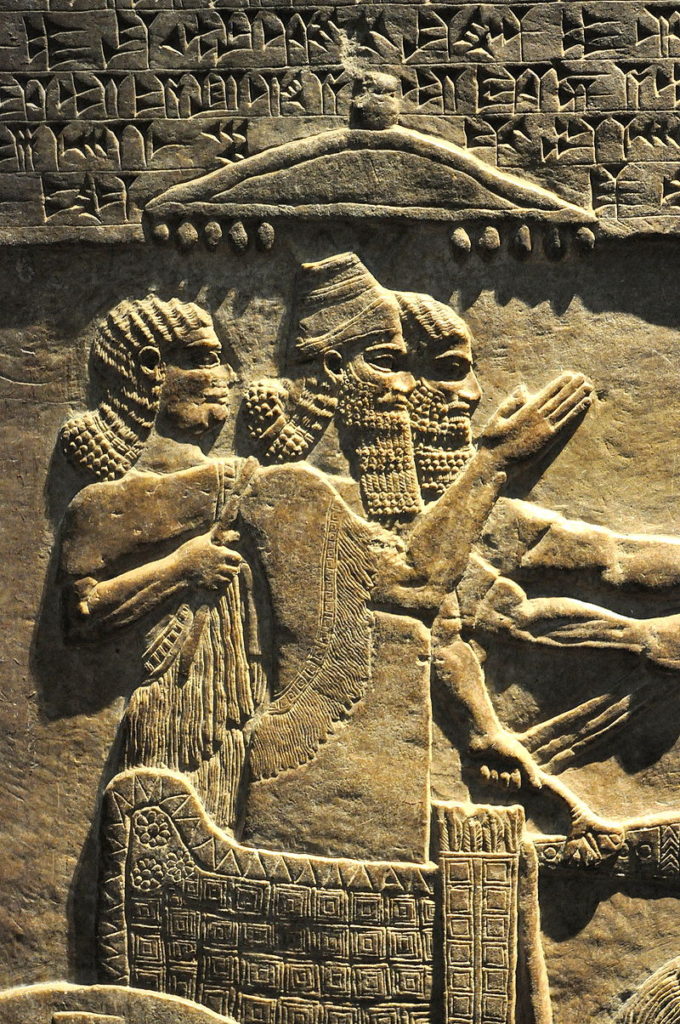
Person That Existed : Jeroboam II King Of Israel (786-746 BC)
Jeroboam II was the son and successor of Jehoash, and the thirteenth king of Israel over which he ruled for forty-one years in the eight century BC. In 1910 G.A. Reisner found sixty-three inscribed potsherds while excavating the royal palace at Samaria, which were later dated to the reign of Jerobaom II and mention regnal years extending from the ninth to the 17th of his reign.
Archaeological evidence confirms the biblical account of his reign as the most prosperous that Israel had yet known. By the late 8th century BC, the territory of Israel was the most densely settled in the entire Levant with a population of about 350,000. This prosperity was built on trade in olive oil, wine, and possibly horses, with Egypt and especially Assyria providing the markets. According to the prophet Amos, the triumphs of the king had engendered a haughty spirit of boastful overconfidence at home (Amos 6:13).
In the fifteenth year of Amaziah the son of Joash king of Judah, Jeroboam the son of Joash king of Israel became king in Samaria, and reigned forty-one years.
2 Kings 14-23
How We Know : Seal Of Shema
While excavating Megiddo (1903-1905) Gottlieb Schumacher uncovered a seal made of jasper in 1904 within courtyard 1693, near the northern wall, engraved with a roaring lion (the symbol of Judah) and accompanied by an inscription which read “Belonging to Shemac the Servant of Jeroboam.” Most scholars agree that the inscription refers to Jeroboam II, king of Israel (ca. 787-747 BC; 2 Kgs 14:23-25).
The seal was first published by E. Kautzsch in 1904 and then by S. A. Cook in 1904 followed by Schumacher in 1908 (p. 99-100) and S. Watzinger in 1929 (p. 64-67)
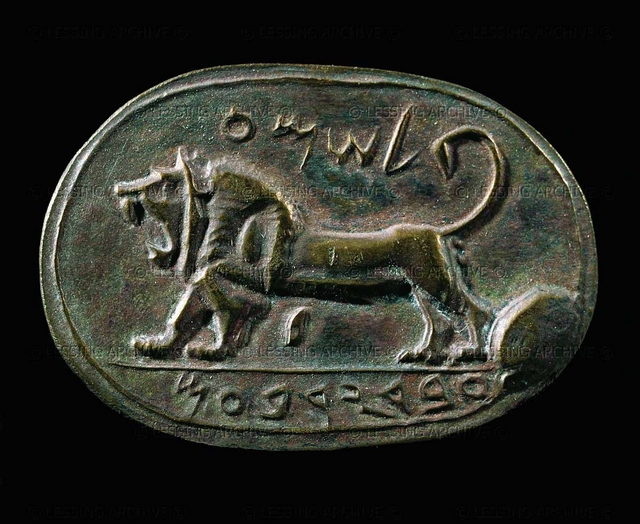
Person That Existed : Sargon II (722-705 BC)
Sargon II was one of the most important kings of the Neo-Assyrian Dynasty. The Bible only mentions Sargon one time (Isaiah 20:1), and his name was unmentioned in any source outside the Bible, causing critics to question whether he even existed.
Joseph M. Holden;Norman Geisler. The Popular Handbook of Archaeology and the Bible: Discoveries That Confirm the Reliability of Scripture (Kindle Locations 828-831). Kindle Edition.
In the year that the commander came to Ashdod, when Sargon the king of Assyria sent him and he fought against Ashdod and captured it, at that time the LORD spoke through Isaiah the son of Amoz, saying, “Go and loosen the sackcloth from your hips, and take your shoes off your feet.” And he did so, going naked and barefoot.
“So the inhabitants of this coast land will say in that day, ‘Behold, such is our hope, where we fled for help to be delivered from the king of Assyria; and we, how shall we escape?'”
Isaiah 20:1,6
How We Know : Lamassu of Sargon II
While excavating what is now known as Sargon’s Palace at Khorsabad in 1843, Paul-Emile Botta unearthed a massive 10-ton, 15-foot-high sculpture known as a lamassu (winged bull with human head) of Sargon II . The text within the sculpture chronicles Sargons capture of Samaria (Isaiah 20:6) and his title, ancestry, and achievements as king.
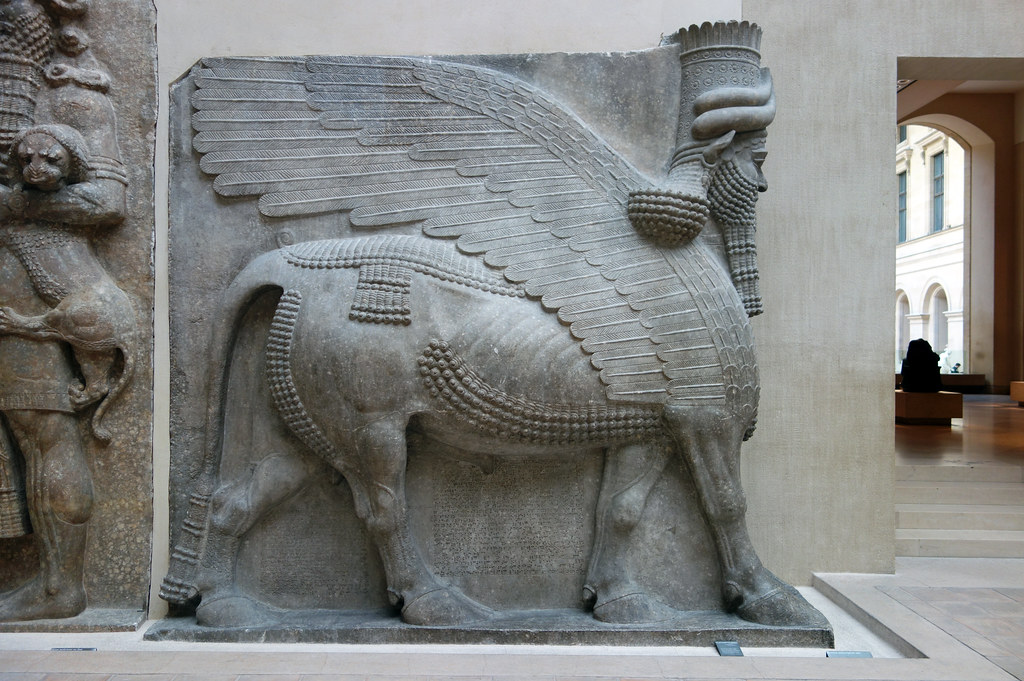
People That Existed : Assyrian King Sennacherib (705-681 BC)
King Hezekiah King Of Judah (729, 716-697, 697-687 BC)
In 1847, Austen Henry Layard discovered Assyrian king Sennacherib’s palace ace wall relief in Nineveh, which depicted his siege of Lachish (Isaiah 36:1-2). This discovery was the first of its kind; it sent shock waves through England since it confirmed an event described in the Bible. Today, in southern Israel at Lachish, Sennacherib’s earthen siege ramp is still visible!
Joseph M. Holden;Norman Geisler. The Popular Handbook of Archaeology and the Bible: Discoveries That Confirm the Reliability of Scripture (Kindle Location 820). Kindle Edition.
Now it came about in the fourteenth year of King Hezekiah, Sennacherib king of Assyria came up against all the fortified cities of Judah and seized them. And the king of Assyria sent Rabshakeh from Lachish to Jerusalem to King Hezekiah with a large army. And he stood by the conduit of the upper pool on the highway of the fuller’s field.
Isaiah 36:1-2
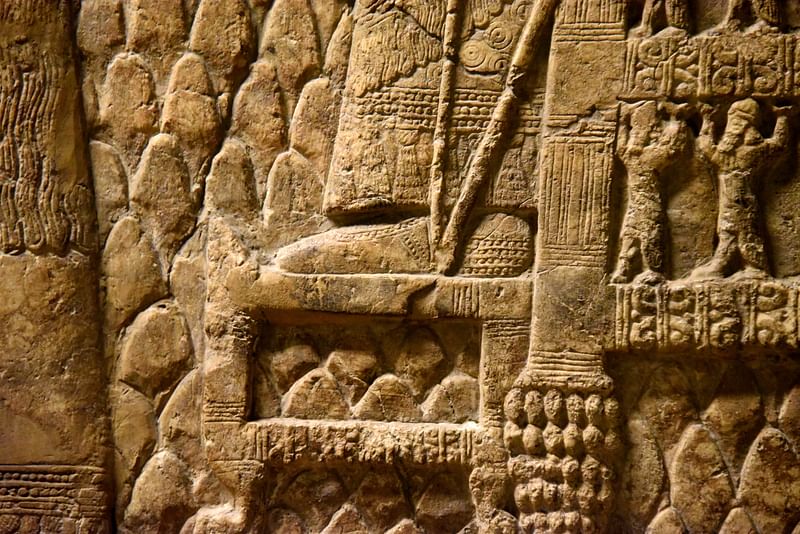
People That Existed : King Belthshazzar Babylonian Empire (-539 BC)
The Prophet Daniel (ca 620-538 BC)
Belshazzar was the eldest son of Nabonidus, the last king of the neo -Babylonian empire, and regent for his father during the latter’s prolonged absence from the city. He may have been killed when Babylon fell to the Persians in 539 BC. Belshazzar also appears as a central character in the story of Belshazzar’s feast in the Book of Daniel.
Belshazzar the king held a great feast for a thousand of his nobles, and he was drinking wine in the presence of the thousand. When Belshazzar tasted the wine, he gave orders to bring the gold and silver vessels which Nebuchadnezzar his father had taken out of the temple which was in Jerusalem, in order that the king and his nobles, his wives, and his concubines might drink from them.
Daniel 5:1-3
Then all the king’s wise men came in, but they could not read the inscription or make known its interpretation to the king. Then King Belshazzar was greatly alarmed, his face grew even paler, and his nobles were perplexed. 10 The queen entered the banquet hall because of the words of the king and his nobles; the queen spoke and said, “O king, live forever! Do not let your thoughts alarm you or your face be pale. 11 “There is a man in your kingdom in whom is a spirit of the holy gods; and in the days of your father, illumination, insight, and wisdom like the wisdom of the gods were found in him. And King Nebuchadnezzar, your father, your father the king, appointed him chief of the magicians, conjurers, Chaldeans, and diviners. “This was because an extraordinary spirit, knowledge and insight, interpretation of dreams, explanation of enigmas, and solving of difficult problems were found in this Daniel, whom the king named Belteshazzar. Let Daniel now be summoned, and he will declare the interpretation.” Then Daniel was brought in before the king.
Daniel 5:8-13
How We Know : Cylinder of Nabonidus
In 185 4, as J .E. Taylor inspected the ancient ruins and ziggurat of the biblical cal city of Ur, he found four clay cuneiform cylinders written by Babylonian king Nabonidus (sixth century BC) that documented the history of the ziggurat gurat and various renovations to buildings. Toward the end of the inscription, Nabonidus offers a prayer for long life for himself and his son Belshazzar! Daniel 5 records that King Belshazzar saw the handwriting on the wall that spelled his doom, and it was only Daniel who could translate the inscription. Prior to this discovery, critics thought the Bible was in error when referring to Belshazzar as “king” (Daniel 5:1), since no extrabiblical sources recorded him on the Babylonian kings list. Now we understand that Belshazzar was Nabonidus’s son; he was left in Babylon as a co-regent king since his father was away a great deal of the time. This also explains why Daniel could rise no higher than “third ruler” in the kingdom (Daniel 5:29)-Nabonidus and Belshazzar were king and co-regent respectively.
Joseph M. Holden;Norman Geisler. The Popular Handbook of Archaeology and the Bible: Discoveries That Confirm the Reliability of Scripture (Kindle Locations 842-848). Kindle Edition.
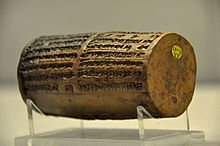
People Who Existed : Pharaoh Necho II King Of Egypt (610-595 BC)
King Josiah Of Judah (640-609 BC)
The Battle of Megiddo is recorded as having taken place in 609 BC when Pharaoh Necho II of Egypt led his army to Carchemish (northern syria) to join with his allies, the fading Neo-Assyrian Empire, against the surging Neo-Babylonian Empire. This required passing through territory controlled by the Kingdom of Judah. The Judaean king Josiah refused to let the Egyptians pass. The Judaean forces battled the Egyptians at Megiddo, resulting in Josiah’s death and his kingdom becoming a vassal state of Egypt. The battle is recorded in 2 Kings 23:29-30 and in the writings of the historian Josephus.
In his days Pharaoh Necho king of Egypt went up to the king of Assyria to the river Euphrates. And King Josiah went to meet him, and when Pharoah Necho saw him he killed him at Megiddo. And his servants drove his body in a chariot from Megiddo, and brought him to Jerusalem and buried him in his own tomb.
2 Kings 23:29-30
How We Know : The Battlefield Of Megiddo Located
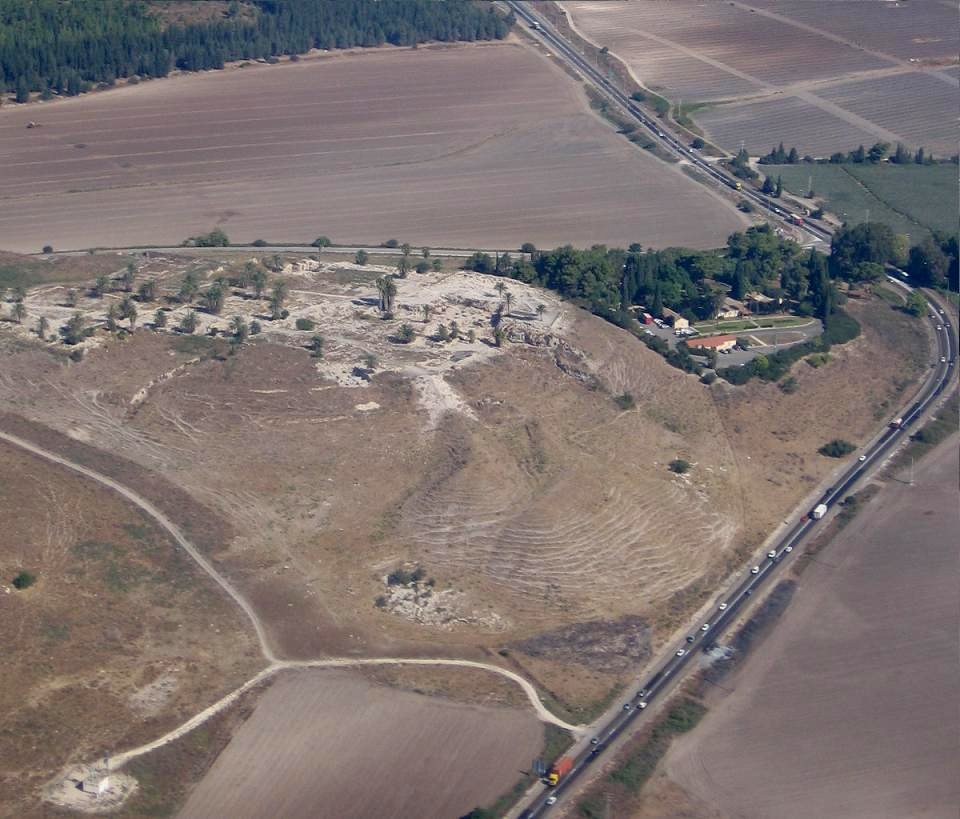
Person Who Existed : Cyrus King Of Persia (600-530 BC)
Commonly known as Cyrus the great, was the founder of the Achaemenid Empire, the first Persian Empire. (600-530 BC) What is sometimes referred to as the Edict of restoration described in the Bible as being made by Cyrus the great left a lasting legacy on the Jewish religion. According to Isaiah 45:1 God anointed Cyrus for this task.
Thus the Lord to Cyrus His anointed, Whom I have taken by the right hand, To subdue nations before him, and to loose the loins of kings
Isaiah 45:1 (Cyrus mentioned 23 other times in Old Testament)
How We Know : Cyrus Cylinder
The Cyrus Cylinder is a document issued by Cyrus the Great, consisting of a cylinder of clay inscribed in Akkadian cuneiform script. The cylinder was created in 539 BC.
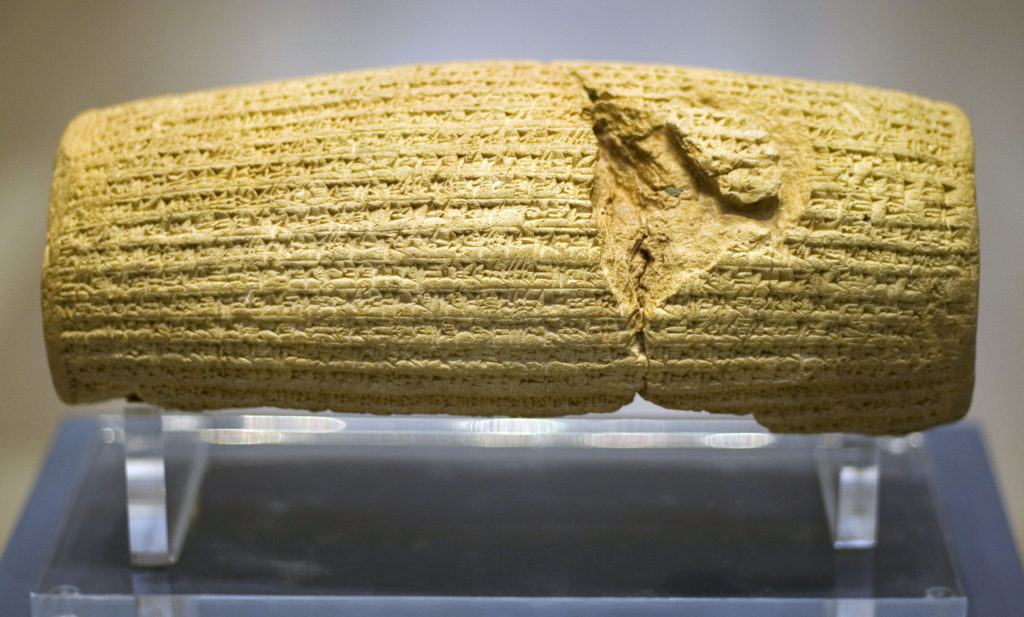
People That Existed : King Nebuchadnezzar II Of Babylon (605-562 BC)
The Prophet Jeremiah (650-570 BC)
King Zedekiah (597-586 BC)
Nebuchadnezzar’s two sieges of Jerusalem (in 597 and 587 BC) are depicted in 2 Kings 24-25. The Book of Jeremiah calls Nebuchadnezzar the “destroyer of nations” (Jeremiah 4:7) and gives an account of the second siege of Jerusalem (587 BC) and the looting and destruction of the First Temple (Book Of Jeremiah 39:1-10; 52:1-30). Nebuchadnezzar’s assault on Egypt four months before the fall of Jerusalem in 587 is represented in Ezekiel as a divine initiative undertaken “by the hand of Nebuchadnezzar, king of Babylon”.
Nebuchadnezzar is an important character in the Old Testament Book of Daniel. Daniel 1 introduces Nebuchadnezzar as the king who takes Daniel and other Hebrew youths into captivity in Babylon, to be trained in “the learning and the tongue of the Chaldeans”. In Nebuchadnezzar’s second year, Daniel interprets the king’s dream of a huge image as God’s prediction of the rise and fall of world powers, starting with Nebuchadnezzar’s kingdom (Daniel 2), the story being the origin of the English-language expression “feet of clay“. Nebuchadnezzar twice admits the power of the God of the Hebrews: first, after God saves three of Daniel’s companions from a fiery furnace (Daniel 3); and secondly, after Nebuchadnezzar himself suffers a humiliating period of madness, as Daniel predicted (Daniel 4). Wikipedia
Now it came about in the ninth year of his reign, on the tenth day of the tenth month, that Nebuchadnezzar king of Babylon came, he and all his army, against Jerusalem, camped against it, and built a siege wall all around it. 2 So the city was under siege until the eleventh year of King Zedekiah.
2 Kings 25:1-2 (Nebuchadnezzar mentioned 91 times in Old Testament, Zedekiah 63 times in Old Testament)
Now in the second year of the reign of Nebuchadnezzar, Nebuchadnezzar had dreams; and his spirit was troubled and his sleep left him. 2 Then the king gave orders to call in the magicians, the conjurers, the sorcerers and the Chaldeans, to tell the king his dreams. So they came in and stood before the king…
Daniel answered before the king and said, “As for the mystery about which the king has inquired, neither wise men, conjurers, magicians, nor diviners are able to declare it to the king. 28 “However, there is a God in heaven who reveals mysteries, and He has made known to King Nebuchadnezzar what will take place in the latter days. This was your dream and the visions in your mind while on your bed.
Daniel 2:1-2, 27-28
How We Know : Inscription Of The Ishtar Gate
The Inscription of the Ishtar Gate is written in Akkadian cuneiform in white and blue glazed bricks and was a dedication by Nebuchadnezzar to explain the gate’s purpose. On the wall of the Ishtar Gate, the inscription is 15 meters tall by 10 meters wide and includes 60 lines of writing. The inscription was created around the same time as the gate’s construction, around 605–562 BCE.
Nebuchadnezzar, King of Babylon, the pious prince appointed by the will of Marduk, the highest priestly prince, beloved of Nabu, of prudent deliberation, who has learnt to embrace wisdom, who fathomed Their (Marduk and Nabu) godly being and pays reverence to their Majesty, the untiring Governor, who always has at heart the care of the cult of Esagila and Ezida and is constantly concerned with the well being of Babylon and Borsippa, the wise, the humble, the caretaker of Esagila and Ezida, the first born son of Nabopolassar, the King of Babylon, am I.
Inscription On Ishtar Gate
